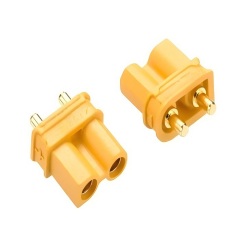How Can I Charge My Drone Battery Without a Charger?
May 20, 2025
For drone enthusiasts, encountering a situation where a battery charger is missing or damaged can be frustrating. However, with a proper understanding of drone battery technology, safety precautions, and alternative methods, it's possible to recharge a drone battery without the original charger. Additionally, in drone power systems, wire harness innovation plays a critical role in maintaining efficiency and safety, especially when using alternative charging methods.
Understanding Drone Battery Basics
Most consumer drones today use LiPo (Lithium Polymer) batteries, which are lightweight and provide high energy density. However, they are sensitive to voltage changes and require careful charging. The original charger typically includes a balance function to charge each cell equally—this is essential for battery longevity and safety. When this dedicated charger is unavailable, alternatives must be used with great care.
Alternative Charging Methods
Using a Universal Balance ChargerA universal balance charger designed for LiPo batteries can serve as an effective substitute. These devices allow manual setting of battery voltage and charging current, mimicking the original charger's function. However, it’s vital to match the voltage (e.g., 3S = 11.1V) and ensure the correct polarity.
USB to XT60 Adapter (Emergency Use Only)Some drone users turn to USB to XT60 adapters. These enable charging a drone battery from a USB power source. While convenient, this method lacks cell balancing and precise voltage regulation, making it a short-term solution rather than a sustainable method.
DIY Charging with a Power SupplyFor advanced users, a variable DC power supply can be used to charge a LiPo battery. This method requires adjusting the output voltage precisel connecting via a compatible battery connector (such as XT30 or XT60), and closely monitoring current and temperature. A high-quality drone battery cable with solid insulation and correct gauge wire ensures secure and safe charging during this process.
The Role of Wire Harnesses in Drone Power Systems
Wire harnesses are critical in safely transmitting power within the drone. A typical custom drone wire harness includes multiple leads for power, signal, and ground. These components need to be lightweight yet capable of carrying high currents without overheating.
Recent innovations in wire harnesses for UAVs focus on integrating multi-functional cables, such as combining power and telemetry in a single harness to reduce weight and complexity. For instance, certain designs now use flat ribbon-style harnesses with EMI shielding, improving signal integrity while minimizing electromagnetic interference with navigation systems.
In alternative charging setups, selecting a quality wire harness with secure connectors is crucial. Loose or poor connections can lead to voltage drops, increased resistance, and even short circuits. Choosing harnesses with gold-plated terminals and high-temperature-resistant insulation improves safety margins, especially in field operations.
Safety Considerations When Charging Without a Standard Charger
Charging drone batteries using non-standard methods involves risk. Here are some essential safety tips:
Use a fireproof charging bag: Especially important when charging LiPo batteries without a balancer.
Monitor temperature: Excessive heating is a sign of overcharging or internal damage.
Never leave batteries unattended: Manual setups lack the fail-safes found in commercial chargers.
Recommended Components for Custom Charging and Integration
To safely implement alternative charging and integrate with drone systems, consider these components:
XT60 Wire Harness with Silicone Jacket: Ideal for custom setups; ensures low resistance and flexibility in tight builds. 3-in-1 Power Distribution Harness: Combines ESC power, telemetry, and signal wires, saving space in compact drone frames. DC to XT60 Adapters with Fuse Protection: Adds a layer of safety when using generic power supplies.
Charging a drone battery without the original charger is feasible, but it demands technical understanding and caution. Whether using a universal charger, a USB adapter, or a bench power supply, the key is matching voltage, preventing overcurrent, and ensuring safe connections through quality wire harnesses.
As drones evolve, the supporting infrastructure—particularly power wiring solutions—continues to innovate, ensuring safer, lighter, and more efficient flight. Investing in reliable wire harnesses and connectors not only facilitates alternative charging but also enhances the overall integrity of the drone’s power system.

 Network Supported
Network Supported